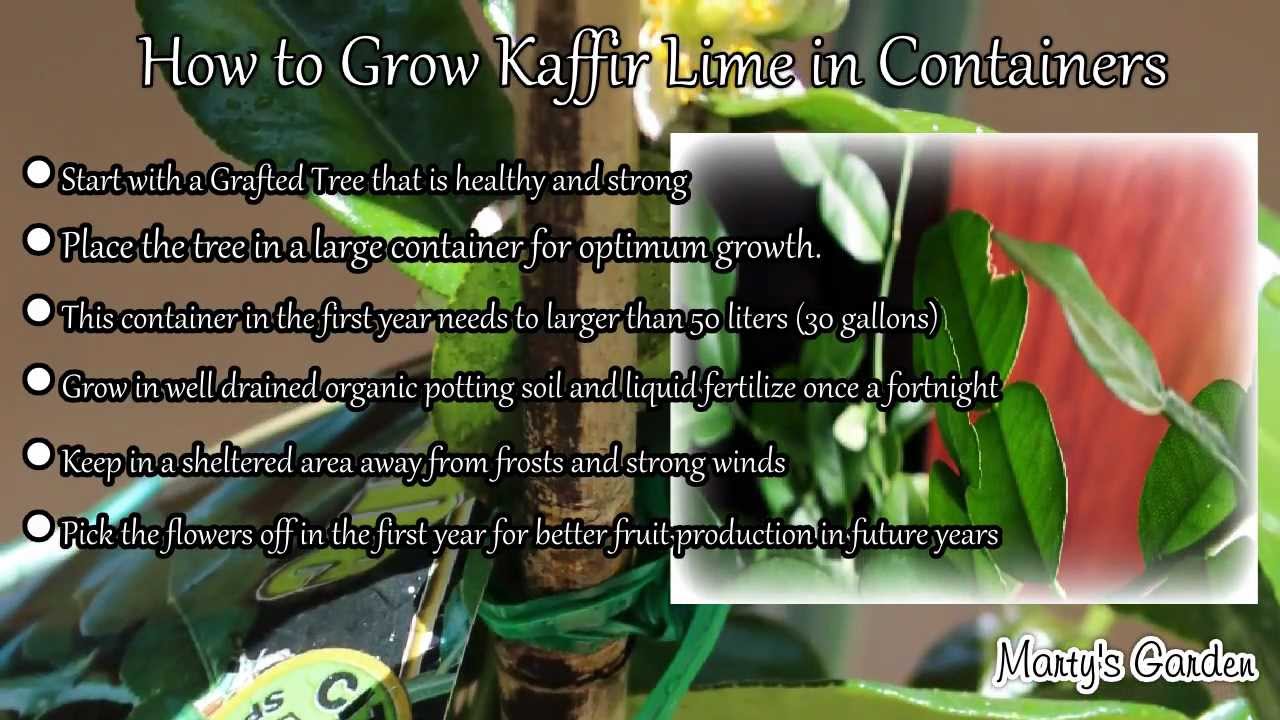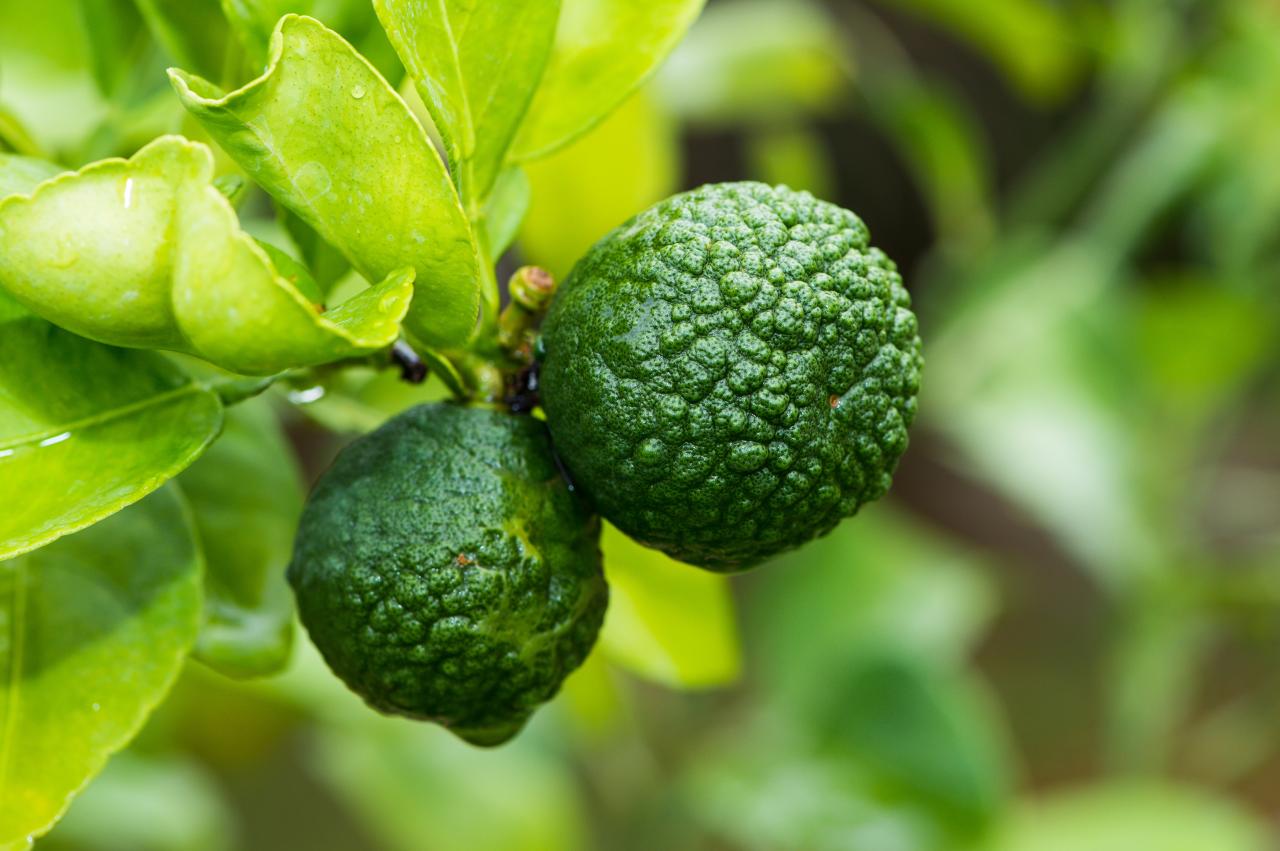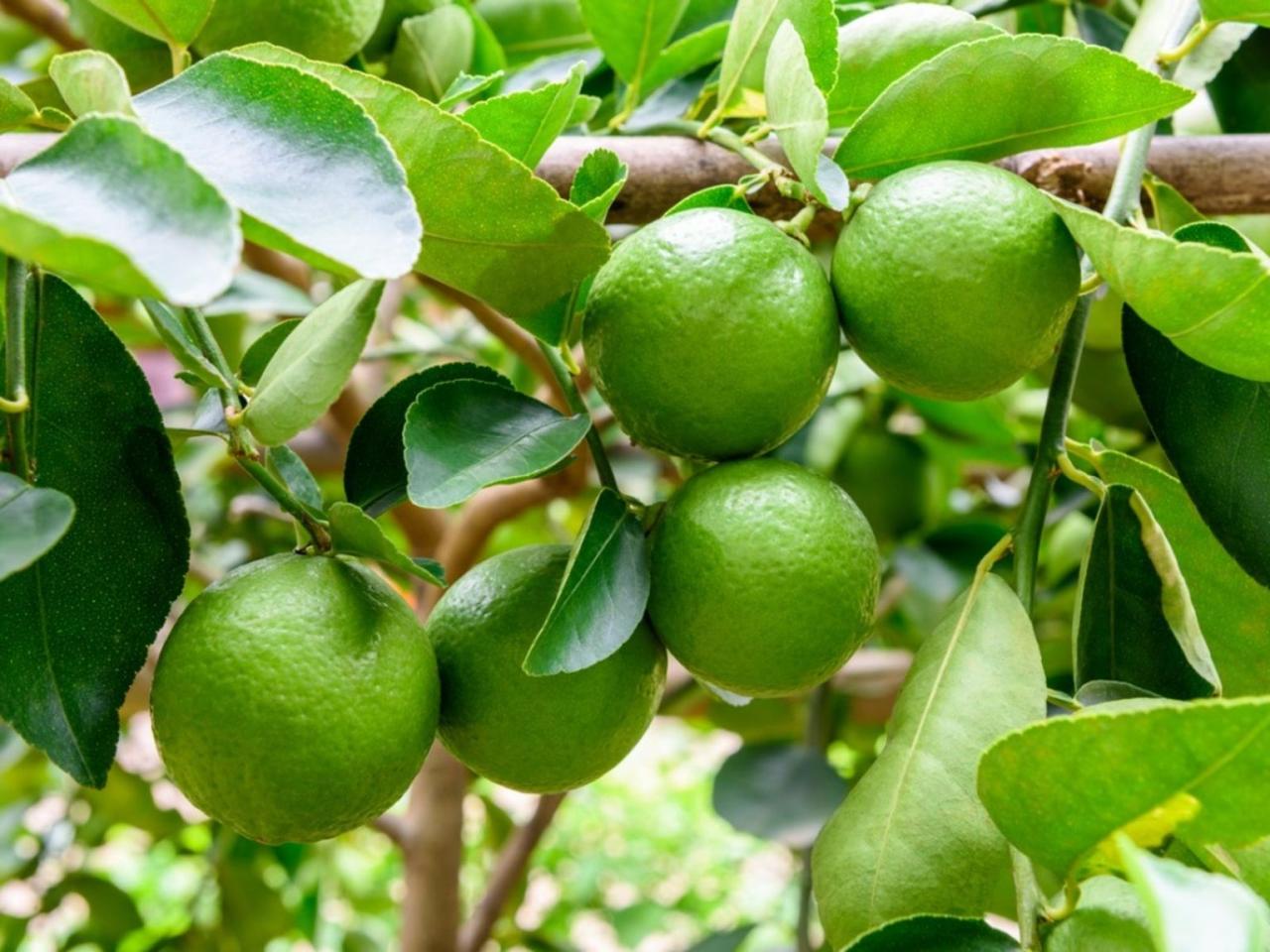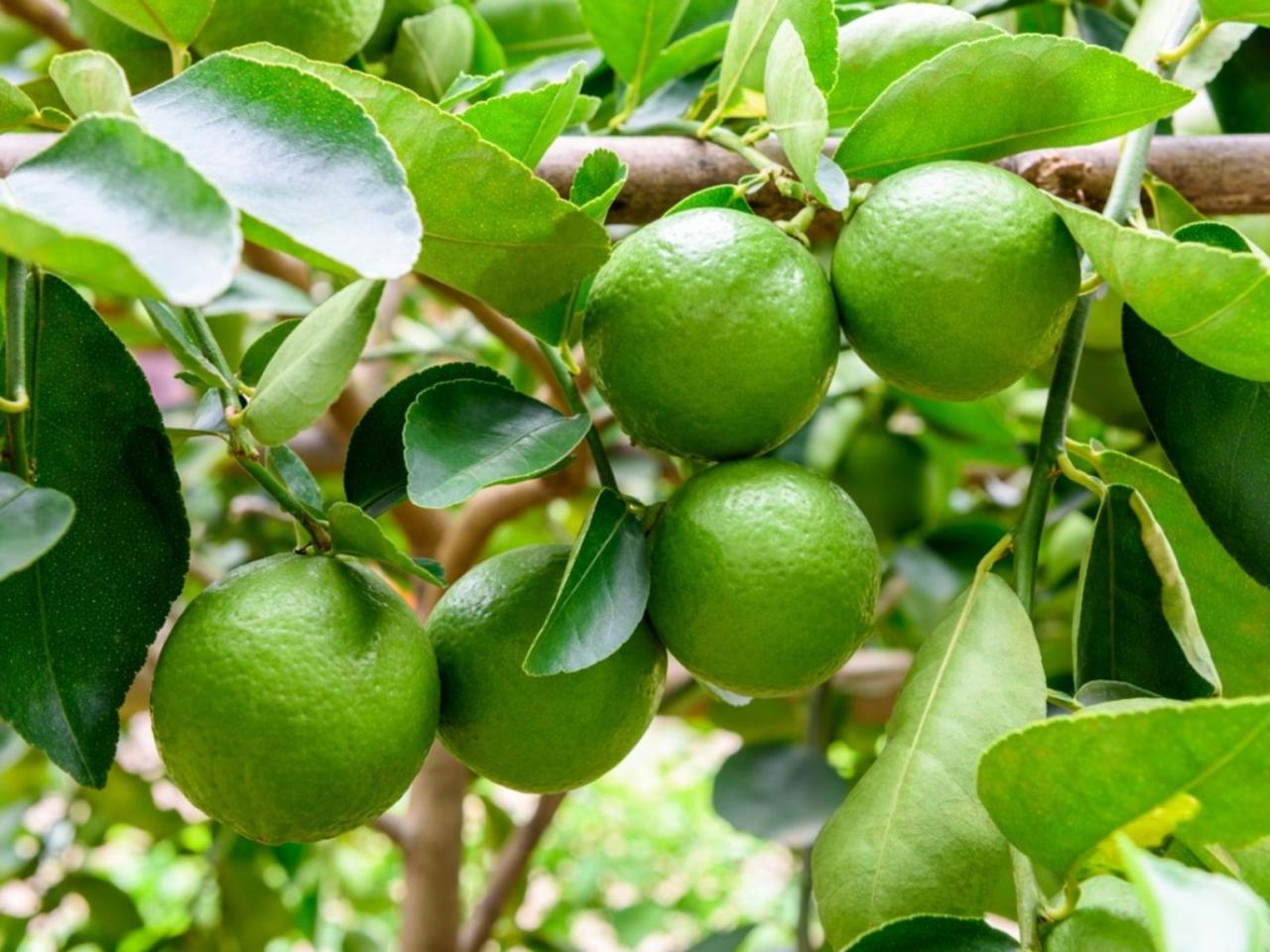How to Grow and Harvest Kaffir Lime Leaf: Tips for a Flavorful Garden – Kaffir lime leaves, with their distinct citrusy aroma and flavor, are a staple in Southeast Asian cuisine. These fragrant leaves add a unique depth to curries, soups, and stir-fries.
Growing your own kaffir lime tree is a rewarding experience, allowing you to enjoy fresh, flavorful leaves year-round. From planting to harvesting, this guide provides essential tips for cultivating a flourishing kaffir lime tree in your garden.
Kaffir lime trees are relatively easy to grow and maintain, thriving in warm climates with well-drained soil. They are also known for their versatility, adapting to container gardening or being incorporated into landscape designs. Whether you’re a seasoned gardener or just starting out, this comprehensive guide will empower you to cultivate a kaffir lime tree that produces an abundance of flavorful leaves for your culinary creations.
Understanding Kaffir Lime Trees
Kaffir lime trees, scientifically known asCitrus hystrix*, are a unique and valuable addition to any home garden. Their distinctive aroma and flavor, along with their versatility in culinary and medicinal applications, make them a prized possession for gardeners and food enthusiasts alike.
Botanical Characteristics of Kaffir Lime Trees, How to Grow and Harvest Kaffir Lime Leaf: Tips for a Flavorful Garden
Kaffir lime trees are evergreen, small to medium-sized trees that typically reach a height of 10 to 20 feet. They are characterized by their dense, spreading canopies and dark green, leathery leaves. The leaves are the most distinctive feature of the kaffir lime tree, with their unique, deeply lobed structure resembling a clenched fist.
These leaves are aromatic, with a pungent, citrusy scent. The fruit of the kaffir lime tree is small and round, with a bumpy, warty skin. The flesh is acidic and tart, similar to other citrus fruits, but it is typically not eaten raw.
Ideal Climate and Soil Conditions for Growing Kaffir Lime Trees
Kaffir lime trees thrive in warm, humid climates. They are native to Southeast Asia and prefer temperatures between 60°F and 90°F. They can tolerate some frost but are susceptible to damage at temperatures below 32°F.
- Sunlight:Kaffir lime trees need at least 6 hours of direct sunlight per day to flourish.
- Soil:They prefer well-drained, slightly acidic soil with a pH range of 6.0 to 6.5.
- Water:Kaffir lime trees require consistent moisture but are susceptible to root rot in overly wet conditions. Regular watering, especially during dry periods, is essential for healthy growth.
Benefits of Growing Kaffir Lime Trees in a Home Garden
Growing kaffir lime trees in a home garden offers several advantages.
- Fresh Ingredients:Having a kaffir lime tree readily available provides a constant supply of fresh leaves for culinary use. These leaves are a key ingredient in many Asian dishes, adding a unique citrusy flavor and aroma.
- Versatility:Kaffir lime leaves can be used in a variety of dishes, from curries and stir-fries to soups and desserts. They can also be used to make flavorful teas and infused oils.
- Medicinal Properties:Kaffir lime leaves have been traditionally used in folk medicine for their potential health benefits. They are believed to possess antibacterial, antifungal, and anti-inflammatory properties.
- Aromatic Beauty:Kaffir lime trees add a touch of tropical beauty to any garden. Their lush foliage and fragrant blossoms create a welcoming and relaxing atmosphere.
Planting Kaffir Lime Trees

Planting kaffir lime trees is a rewarding endeavor that brings the exotic aroma and flavor of this citrus fruit to your garden. Whether you’re starting from seeds or cuttings, proper planting techniques ensure healthy growth and a bountiful harvest.
Planting Kaffir Lime Trees from Seeds
Planting kaffir lime trees from seeds is a straightforward process that requires patience and attention to detail. The seeds need to be extracted from ripe kaffir lime fruits and prepped for germination.
- Seed Extraction and Preparation:Extract the seeds from ripe kaffir lime fruits and remove any surrounding pulp. Gently wash the seeds to remove any remaining fruit residue. Soak the seeds in warm water for 24 hours to soften the seed coat and promote germination.
- Planting Medium:Prepare a well-draining potting mix suitable for citrus trees. A mixture of peat moss, perlite, and compost is ideal. Fill a seed tray or small pots with the potting mix.
- Sowing Seeds:Sow the prepared seeds in the planting medium, ensuring they are about 1/2 inch deep. Water the seeds thoroughly and place the tray or pots in a warm, sunny location.
- Germination:Kaffir lime seeds typically germinate within 2 to 4 weeks. Maintain a consistent temperature and moisture level during this time.
- Transplanting:Once the seedlings have developed a few true leaves, they can be transplanted into larger pots or directly into the garden.
Planting Kaffir Lime Trees from Cuttings
Planting kaffir lime trees from cuttings is a faster and more reliable method compared to starting from seeds. This technique involves taking healthy cuttings from a mature kaffir lime tree and rooting them.
- Cutting Selection and Preparation:Choose healthy, disease-free stems from a mature kaffir lime tree. Cuttings should be 6 to 8 inches long and taken from the current year’s growth. Remove the leaves from the bottom 2 to 3 inches of the cutting.
- Rooting Hormone:Dip the cut end of the cutting in a rooting hormone powder or solution. This encourages root development.
- Planting Medium:Use a well-draining potting mix suitable for citrus trees. A mixture of peat moss, perlite, and vermiculite is recommended. Fill a pot or seed tray with the potting mix.
- Planting Cuttings:Insert the treated cuttings into the planting medium, ensuring that the bottom 2 to 3 inches are buried. Water the cuttings thoroughly.
- Rooting Conditions:Provide a warm, humid environment for the cuttings to root. A humidity dome or plastic wrap can help retain moisture. Place the pot in a bright, indirect light location.
- Transplanting:Once the cuttings have rooted, which typically takes 4 to 6 weeks, they can be transplanted into larger pots or directly into the garden.
Optimal Planting Time
The optimal time to plant kaffir lime trees varies depending on the region’s climate.
- Warm Climates:In regions with warm climates, kaffir lime trees can be planted year-round. However, planting during the spring or early summer months is ideal as the warm temperatures and ample sunlight promote healthy growth.
- Cool Climates:In regions with cool climates, it is best to plant kaffir lime trees during the spring or early summer after the last frost. This allows the trees to establish themselves before the colder months.
Spacing and Sunlight Exposure
Proper spacing and sunlight exposure are crucial for the healthy growth and productivity of kaffir lime trees.
- Spacing:Allow ample space between kaffir lime trees to prevent overcrowding and competition for resources. A spacing of 10 to 15 feet between trees is recommended.
- Sunlight Exposure:Kaffir lime trees thrive in full sun, receiving at least 6 to 8 hours of direct sunlight daily. Ensure the planting location provides ample sunlight throughout the day.
Caring for Kaffir Lime Trees
Providing the right care ensures your kaffir lime tree thrives and produces flavorful leaves. This involves understanding its watering and fertilization needs, identifying and addressing potential pest and disease issues, and employing proper pruning techniques.
Watering Requirements
Consistent watering is crucial for healthy kaffir lime tree growth. These trees prefer well-drained soil that is consistently moist but not waterlogged.
- Water deeply and thoroughly, allowing the water to penetrate the root zone. This encourages root development and helps the tree withstand drought conditions.
- During the dry season, increase the frequency of watering to maintain soil moisture. Avoid overwatering, which can lead to root rot.
- Monitor the soil moisture level regularly, particularly during hot weather or when the tree is young.
Fertilizing Kaffir Lime Trees
Regular fertilization provides essential nutrients for optimal growth and leaf production.
- Use a balanced fertilizer formulated for citrus trees, ensuring it contains nitrogen, phosphorus, and potassium.
- Apply fertilizer during the spring and summer months when the tree is actively growing.
- Follow the fertilizer’s instructions for application rates and frequency. Overfertilizing can damage the tree.
Pests and Diseases
Kaffir lime trees are susceptible to various pests and diseases. Early detection and preventive measures are essential for maintaining the tree’s health.
- Citrus leafminer:These insects tunnel into the leaves, causing brown trails and leaf drop. Control measures include using insecticidal soap or neem oil sprays.
- Citrus greening disease (Huanglongbing):This bacterial disease is spread by an insect called the Asian citrus psyllid. It causes fruit to become misshapen and bitter. There is no cure for this disease, so prevention is key.
- Scale insects:These insects suck sap from the tree, causing leaves to yellow and drop. Control measures include using horticultural oil or insecticidal soap sprays.
- Fungal diseases:These diseases can cause leaf spots, fruit rot, and root rot. Prevention involves providing good drainage and avoiding overwatering.
Pruning Techniques
Regular pruning promotes healthy growth and improves fruit production.
Pruning Technique |
Description |
Purpose |
|---|---|---|
Training Pruning |
Pruning young trees to establish a strong framework. |
Encourages a balanced canopy and improves airflow. |
Maintenance Pruning |
Removing dead, diseased, or crossing branches. |
Promotes healthy growth and prevents disease spread. |
Fruiting Pruning |
Pruning after fruiting to remove excess branches and encourage new growth. |
Improves fruit production and maintains tree shape. |
Harvesting Kaffir Lime Leaves

Harvesting kaffir lime leaves is an essential part of growing this flavorful citrus. Understanding the ideal time and method for harvesting ensures you get the most aromatic and flavorful leaves for your culinary creations.
Harvesting Time and Method
The optimal time to harvest kaffir lime leaves is when they are young and tender, as they possess the most vibrant aroma and flavor. Avoid harvesting leaves that are too old or mature, as they can be tough and have a less intense flavor.
Growing your own kaffir lime leaves can be a rewarding experience, offering a fresh and flavorful ingredient for your culinary creations. Just like you can save money by propagating roses from cuttings, as detailed in this informative guide, Never Buy Roses Again: How To Propagate Roses From Cuttings and Save Money! , you can also easily propagate kaffir lime trees from cuttings.
This simple technique allows you to expand your herb garden and enjoy a continuous supply of fragrant leaves for your cooking.
- Choose the Right Leaves:Select young, bright green leaves that are still pliable and have a delicate texture. They are typically found at the tips of the branches or along the sides of the stems.
- Use Clean Scissors:Use sharp, clean scissors or pruning shears to cut the leaves cleanly. This prevents damage to the plant and ensures the leaves remain fresh.
- Harvest with Moderation:Don’t harvest too many leaves at once, as this can stress the plant. It’s best to take only a few leaves from each branch to encourage continued growth.
Flavor Differences Between Young and Mature Leaves
Kaffir lime leaves undergo a transformation in flavor and aroma as they mature.
- Young Leaves:Young leaves possess a bright, citrusy aroma with hints of lemon and a slightly peppery note. Their flavor is delicate and refreshing, ideal for adding a subtle citrus touch to dishes.
- Mature Leaves:Mature leaves have a more intense, pungent aroma and a slightly bitter flavor. They are often used in dishes where a stronger citrus flavor is desired, such as curries or stews.
Storing Harvested Kaffir Lime Leaves
Proper storage is crucial for preserving the freshness and flavor of harvested kaffir lime leaves.
- Refrigeration:Store harvested leaves in an airtight container in the refrigerator. They can last for up to a week, retaining their flavor and aroma.
- Freezing:For longer storage, freeze kaffir lime leaves in a freezer-safe bag. They can last for several months, although the texture might become slightly softer after thawing.
Culinary Uses of Kaffir Lime Leaves
Kaffir lime leaves, with their distinct aroma and flavor, are a staple ingredient in Southeast Asian cuisine. They add a unique citrusy, herbal, and slightly peppery note to dishes, enhancing their complexity and depth of flavor.
The Flavor Profile of Kaffir Lime Leaves
The flavor of kaffir lime leaves is a combination of citrusy, floral, and slightly peppery notes. The leaves contain essential oils that release a strong, aromatic fragrance when cooked. Their unique flavor profile complements a wide range of cuisines, from Thai and Vietnamese to Indonesian and Malaysian.
Growing kaffir lime trees from seed can be a lengthy process, but propagation techniques can accelerate your harvest. Just as you can multiply your ivy plants with cuttings, Turn One Ivy Plant into Many: Propagation Hacks for Faster Growth , you can also use cuttings to propagate kaffir lime trees.
This method allows you to quickly establish new plants and enjoy the distinctive citrusy aroma of kaffir lime leaves in your garden sooner.
Popular Dishes Featuring Kaffir Lime Leaves
Kaffir lime leaves are commonly used in various dishes, including:
- Curries:Kaffir lime leaves are a key ingredient in many curries, such as green curry, red curry, and massaman curry. They add a refreshing citrusy note to the rich, creamy coconut milk base.
- Soups:Kaffir lime leaves are often used in soups, such as Tom Kha Gai (Thai coconut soup with chicken) and Tom Yum (Thai spicy and sour soup). They add a distinct citrusy flavor and aroma to the broth.
- Stir-fries:Kaffir lime leaves are commonly used in stir-fries, adding a refreshing citrusy note to the dish. They can be added whole or chopped and used with various vegetables and meats.
- Salads:Kaffir lime leaves can be used to add a refreshing citrusy note to salads. They can be added whole, chopped, or used to create a flavorful dressing.
- Marinades:Kaffir lime leaves can be used in marinades for meat, fish, and poultry. They add a unique citrusy and herbal flavor to the marinade.
Creative Ways to Incorporate Kaffir Lime Leaves
Kaffir lime leaves can be incorporated into various dishes, adding a unique and flavorful touch.
- Infuse oils and vinegars:Kaffir lime leaves can be infused in oil or vinegar to create flavorful sauces and dressings. Infused oil can be used for stir-fries, while infused vinegar can be used for salads and marinades.
- Add to rice dishes:Kaffir lime leaves can be added to rice dishes, such as fried rice or steamed rice, to add a citrusy and herbal flavor.
- Use in desserts:Kaffir lime leaves can be used in desserts, such as cakes, cookies, and ice cream, to add a unique citrusy flavor.
- Make tea:Kaffir lime leaves can be used to make a refreshing and flavorful tea. They can be steeped in hot water for a few minutes, then enjoyed with honey or sugar.
Last Recap

Growing your own kaffir lime tree is a rewarding experience that brings a unique flavor to your dishes. By understanding the essential aspects of planting, caring for, and harvesting these aromatic leaves, you can create a flourishing garden that provides a constant supply of fresh, flavorful ingredients.
So, why not embark on this culinary journey and savor the delicious rewards of a thriving kaffir lime tree?
Expert Answers: How To Grow And Harvest Kaffir Lime Leaf: Tips For A Flavorful Garden
What is the best way to use kaffir lime leaves in cooking?
Kaffir lime leaves are typically used whole or torn into pieces. They can be added to soups, curries, stir-fries, and marinades. The leaves should be removed before serving as they can be tough to eat.
Can I use kaffir lime leaves in place of regular lime?
While both kaffir lime and regular lime have a citrusy flavor, their taste profiles are distinct. Kaffir lime leaves have a more intense, slightly peppery aroma, while regular limes have a brighter, more acidic flavor. They are not interchangeable.
How long do kaffir lime leaves last?
Fresh kaffir lime leaves can be stored in the refrigerator for up to a week. They can also be frozen for longer storage. Freezing the leaves preserves their flavor and aroma.
